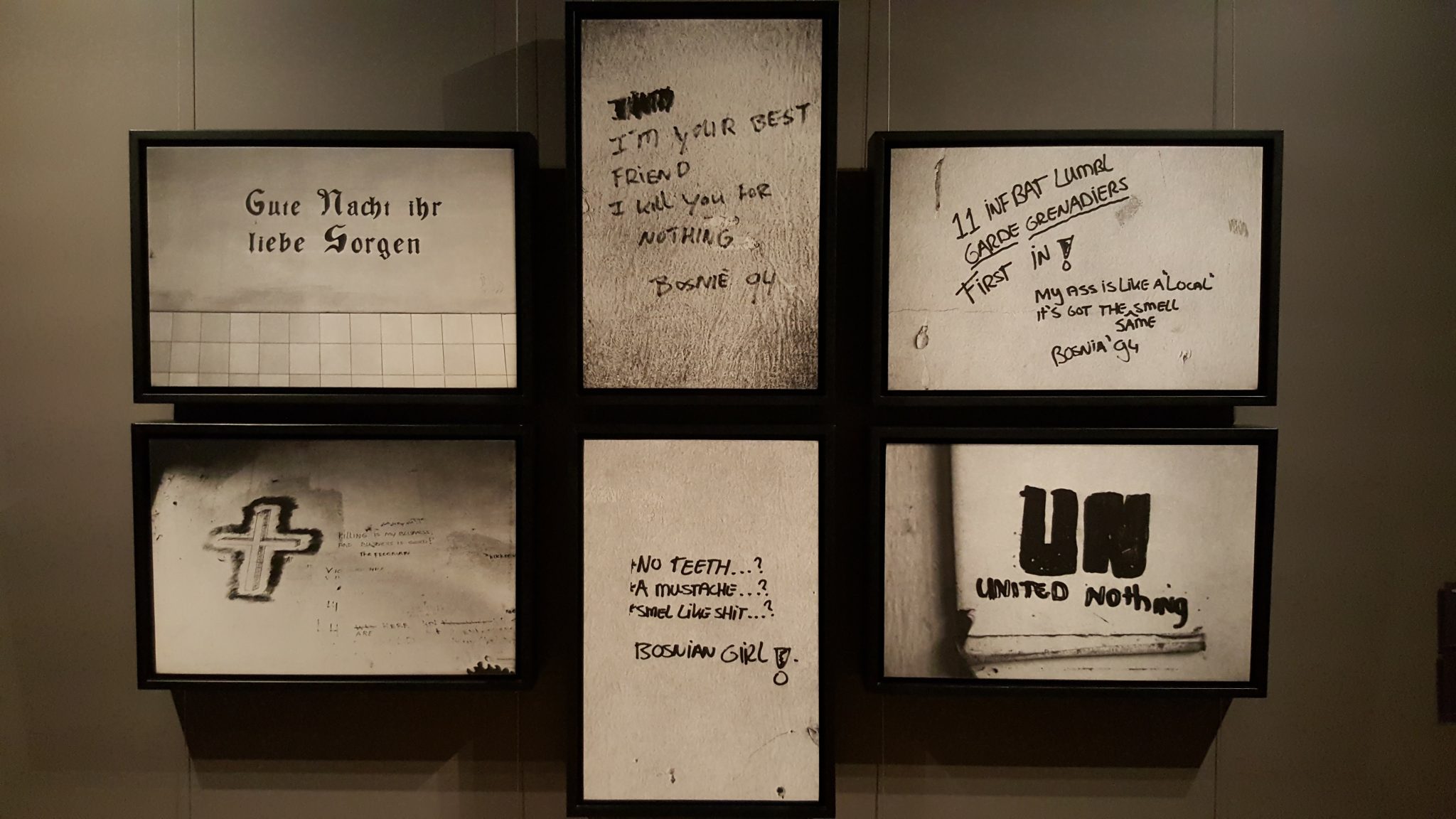
Main Attraction: 10 Tourist Destinations That Should Totally Be Movies
C’mon kids! Gather ’round -it’s story time at Story in Bloom!
As a producer, my job is all wrapped up in story all the time. Stories are how I make sense out of the world around me. Even, or should I say especially, when travelling. Just as an architect looks at Notre Dam and notices how it was built or an engineer looks at the Roman aqueducts and marvels at their design, I tend to look at the backstories that make places significant. It’s just how I process things.
Most of the time, this is just a game for me – a way for me to understand what I’m looking at and experiencing. But some of the places we visited had stories so rich, so insane, and so interesting that I couldn’t help but think, “How is this not a movie yet?!” Often, I would read a plaque on the side of a monument or an excerpt from a book about the region – and in one sentence or one paragraph – a dramatic film idea would sprout in my mind. This happened all the time, but below are some of the examples that I just can’t shake.
10. Royal Palace – Bucharest, Romania
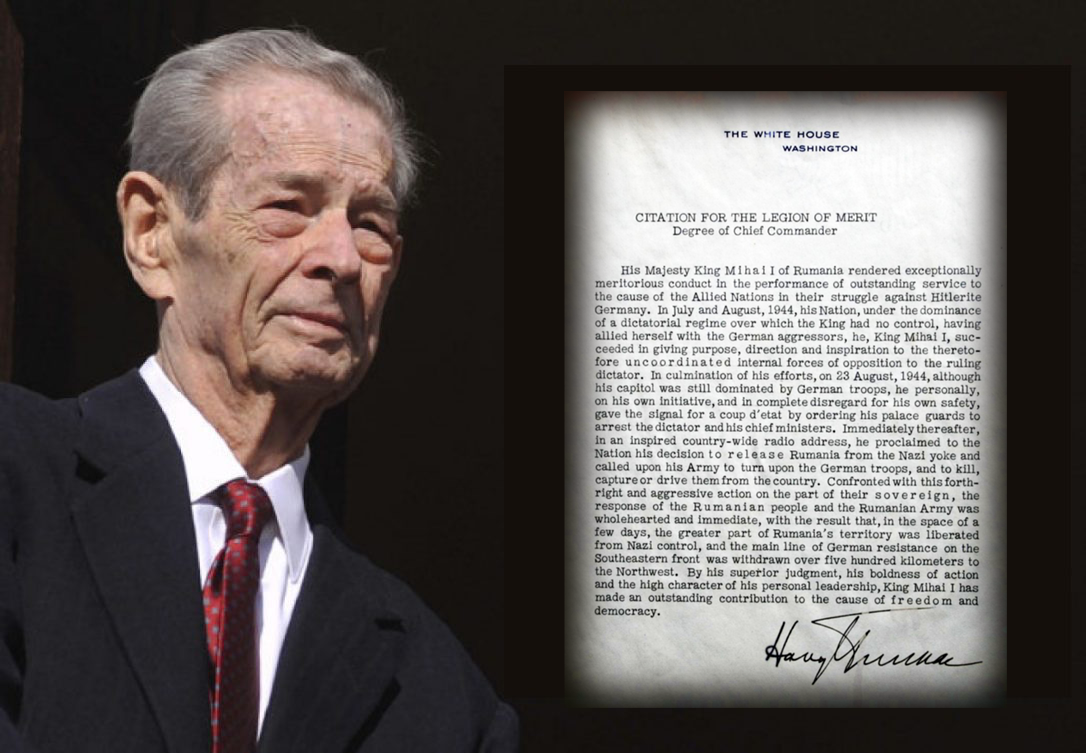
Now an Art Museum, Romania’s former royal residence has a storied past and is, in fact, listed twice on this list – that’s how cool this place is. At first glance, it looks like any other awesome palace, but if you take a closer look at what has occurred here, you’ll be flabbergasted that it’s history hasn’t hit a theater near you. I ran across the first example while exploring my options for Romanian citizenship. I met with an attorney who happened to also be an attorney for King Mihai the former King of Romania during World War II. In explaining why he is such a big deal, the attorney showed me this copy of the Legion of Merit which was bestowed upon the King by US President Truman after the Allied victory.
If you can’t read this commendation written by President Truman to King Mihai of Romania and see an epic coup d’etat film, then you win the Guinness World Record for least amount of creativity present in the human brain. I mean seriously, this is the stuff of legend! A young king, considered to be just a figurehead, against an entire fascist regime leads his country in one of the most large-scale coup d’etats in history. For the love of everything holy, Hollywood get on this.
9. Comuna 13 – Medellín, Colombia
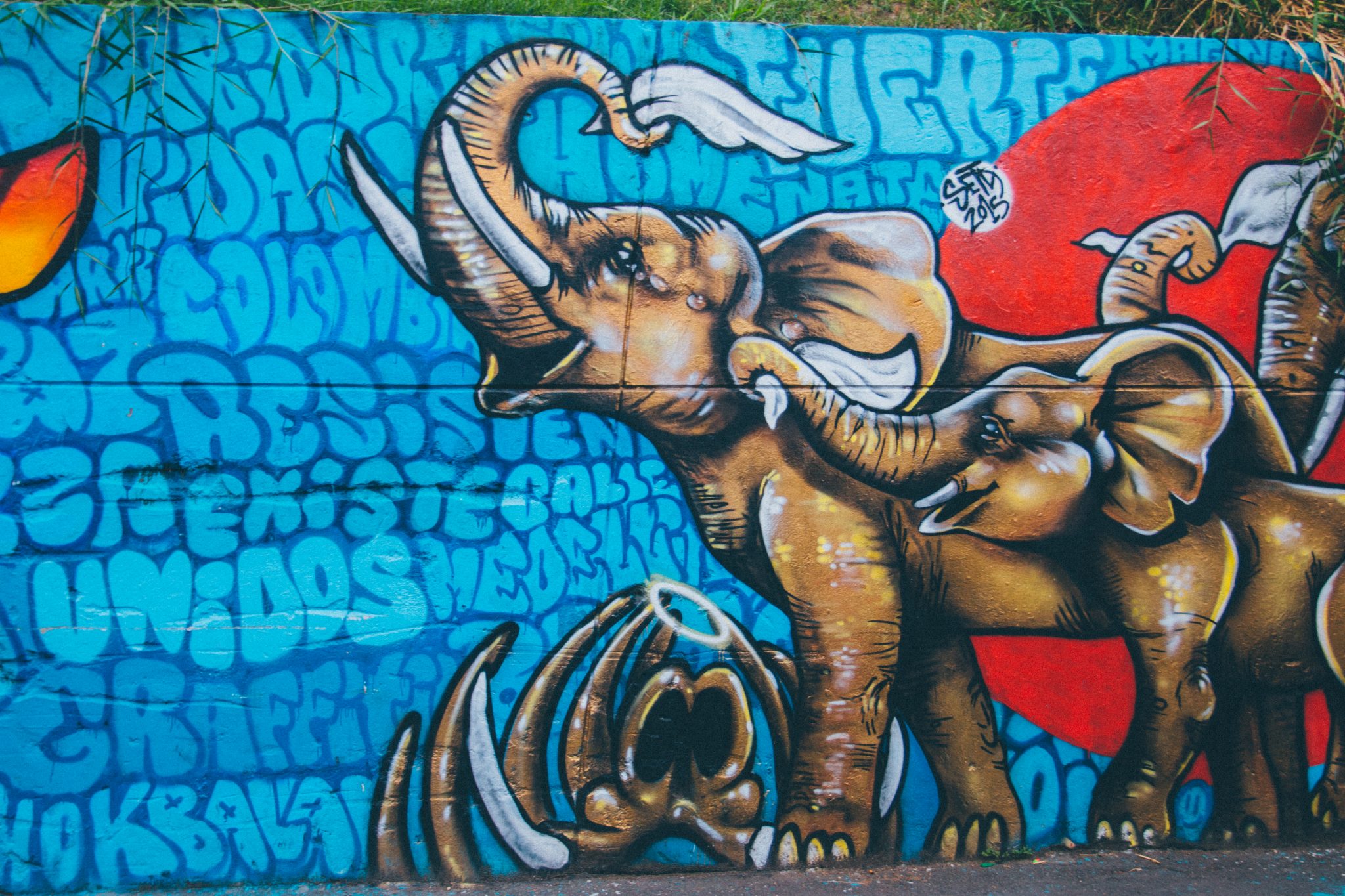
No trip to Medellin, Colombia is complete without a trip to its most famous “Comuna” or neighborhood, Comuna 13 – a shanty-town, rubbled community built into one the steep hillsides that surround the city. Tourists flock to the area to see democratic architecture and urban renewal in action – once the poorest and most dangerous area of Medellin is now a tourist attraction becuase of its awesome government funded graffiti projects and its escalators – yes, escalators. These were installed to provide easier access for its inhabitants to reach the city center cutting a journey of an arduous 2 hour descent from the steep hills to six minutes on electric stairs. But if you look closely, the colorful graffiti tells you a story you won’t forget. Many of the animals depicted seem to be waving white rags, sheets or flags. Ask a local what this means and they will tell you the true story of Operation Orion:
‘In the early morning hours of May 21, 2002, some 700 troops, backed by tanks, moved in while neighborhood militias attempted to impede the advance with machine guns. Blackhawk helicopters rained down bullets indiscriminately on targeted neighborhoods; house to house searches that gave way to looting were conducted with no warrant, and announced with bullets through the front door; young men were dragged into the streets, tied up, beaten and/or killed with children looking on. Heroic neighborhood residents tried to rescue the injured and provide medical attention amidst a hail of bullets fired by agents of the state. People hung white sheets, towels, and shirts from their windows to express their desire for a cease-fire; children armed with sticks and stones confronted soldiers and police, demanding that they leave the neighborhood, shouting, “We want peace! We want peace!” ‘
Two rebel militias, the world’s most powerful drug cartel, and a government all fighting for control of a shitty hillside ghetto in the most dangerous city in the world. Innocent civilians literally begging, waving white flags, for peace as their government fires on them and refuses aid. You don’t get much more action than that. But the actual Operation was only the beginning. The government succeeded in expelling the left-wing rebels, but the right-wing rebels moved in in the vacuum creating a verifiable reign of terror – where hundreds of the impoverished citizens were terrorized, tortured, killed or just plain disappeared. Sound like conspiracy theory? Well, the disappearances used to be classified as such. That is until 2015 when the largest urban exhumation of a mass grave was undertaken in Medellin where it is estimated over 300 bodies from Comuna 13 as well as other victims of Medellín’s war lie under the rubble. That alone is enough for a documentary . But to me, the dramatic visual of besieged civilians waving white flags from their hillside shacks as the military conducts raid after raid and helicopters refuse aid is something that should be immortalized on screen. Couldn’t you see this as a film: Her daughter was ripped from her bed at gun-point and never seen again. The government refuses to acknowledge the disappearance. Plagued by debilitating flashbacks of war and violence, one mother refuses to give up the search for her child – prompting the largest urban mass exhumation in history.
8. The Houska Castle – Prague, Czech Republic
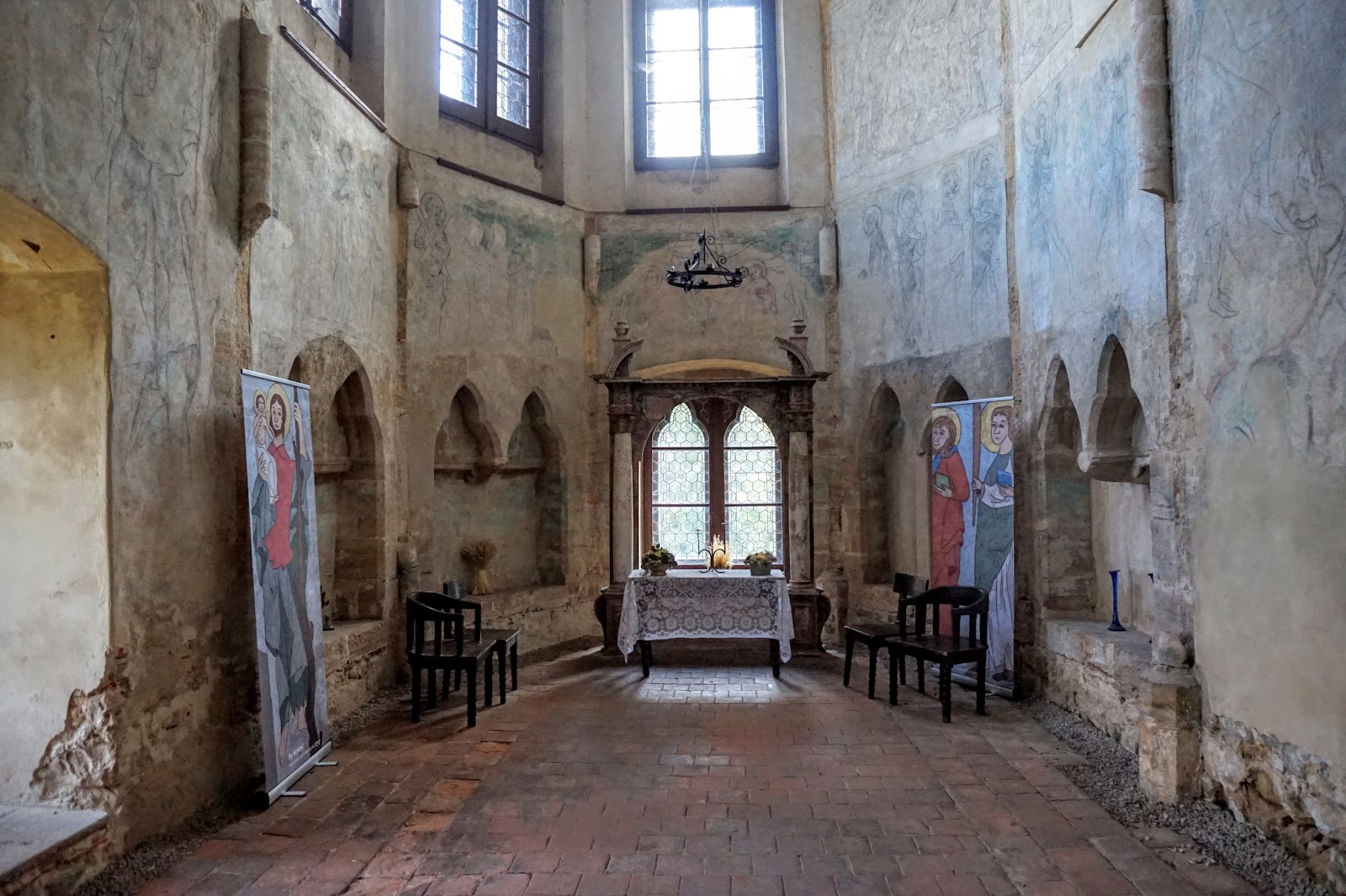
The city of Prague is so stunning and rich in history, that most visitors don’t get a chance to venture outside the city center. But if you’re ever over that way, I suggest you take a couple day trips outside of the city to the surrounding attractions – most notably the hauntingly beautiful church made of bones, The Sedlec Ossuary; the natural wonder of the Prachov Rocks; and The Houska Castle. And listen up, the Houska Castle isn’t just any old extravagant architectural waste of medieval money – this thing is seriously creepy. Creepy enough to, yes, have a movie of its own because, you know, it’s just a GATE TO HELL! According to Wikipedia:
“Houska castle, and most specifically the chapel, has been constructed over a large hole in the ground that is allegedly a “gateway to Hell”, which was said to be so deep no one could see the bottom of it.[2] Animal-human hybrids were reported to have crawled out of it, and dark-winged, otherworldly creatures flew in its vicinity. Legend has it that when construction began in the castle, all of the inmates that were sentenced to death were offered a pardon if they consented to be lowered by rope into the hole, and report back on what they saw. When the first person was lowered, he began screaming after a few seconds, and when pulled back to the surface he looked as if he had aged 30 years. He had grown wrinkles and his hair had turned white, as old folklore tales state. Houska castle was built with no fortifications, no water, no kitchen, near no trade routes, and with no occupants at its time of completion. The castle was not built as a residence or as a protective sanctuary, but was instead built because the hole was thought to be a gateway to hell. Thus, by constructing the Gothic building, they were able to keep the demons trapped in the lower level thickest walls closest to the hole of the castle.“
During WWII, the Nazis used this place as their secret headquarters where they performed inhuman experiments on people. Folklore suggests they were actually trying to harness the power of hell.
Today, one awesome and in-character caretaker lives at the castle with his one-headed, lovable hell-hound, Cerberus. So…all I’m saying if America’s “pit to hell”, Amityville can have not one but 16 (bad) movies how did an ancient castle actually built over a pit fall by the wayside. C’mon Wes Craven, are you asleep behind the lens or something?
7. The Haggadah in The National Museum – Sarajevo, Bosnia Herzegovenia
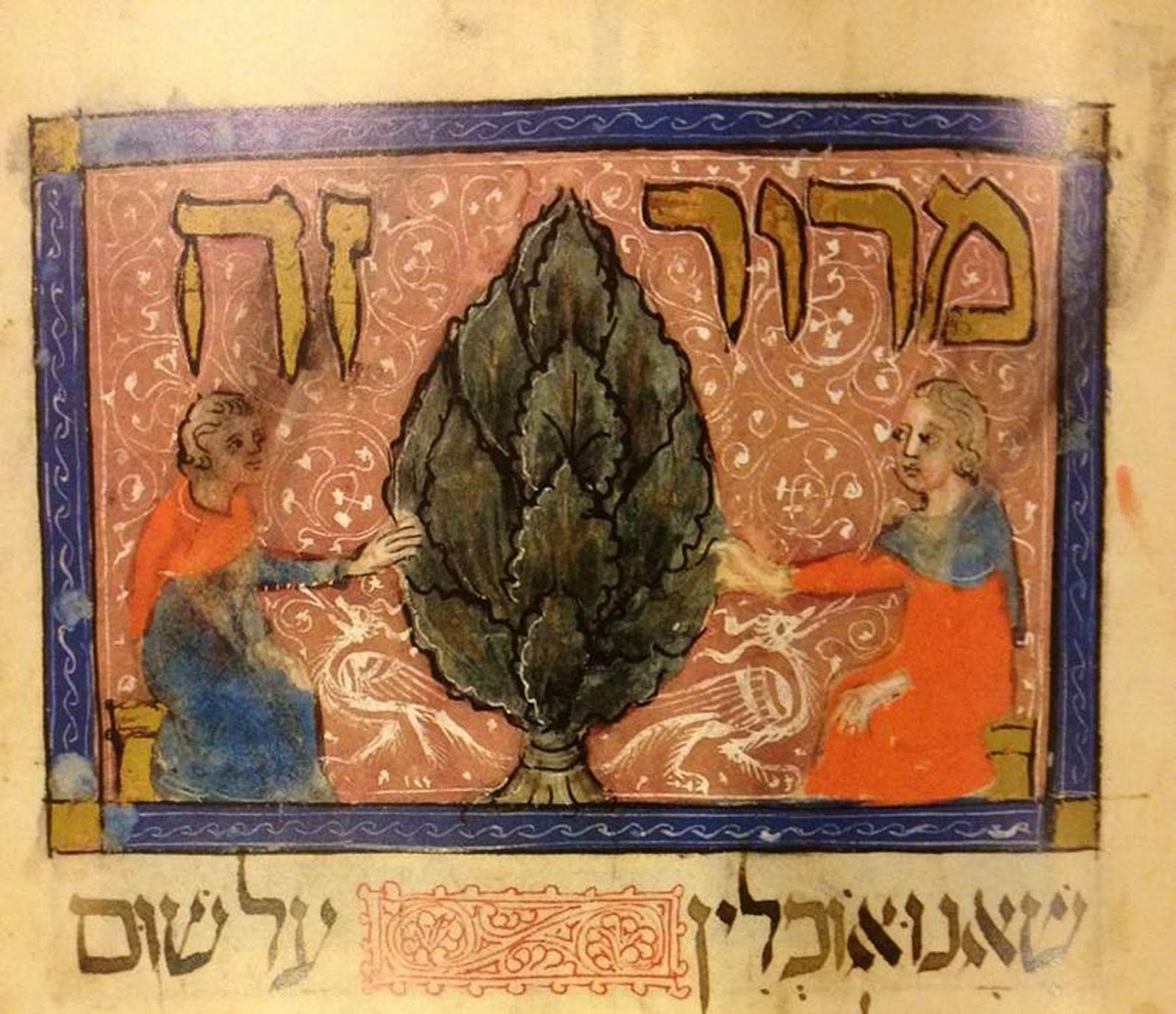
“My friend was a guard to the Bosnian President during the Siege of Sarajevo. [The President] was housed in the bank vault and was guarded 24-7 by the most highly trained men in the Bosnian military. But anyway, my friend one day is given an order by his commander. The commander says, if we get raided, save the book not the President”
This is how I first heard about the amazing story of the Sarajevo Haggadah. This is a 700-year biblical scripture sacred to the Sephardic jews and the text tells the Passover story. It survived the Spanish Inquisition, The Holocaust, and the Bosnian War. But more incredibly, it is responsible for saving the lives of two people targeted for ethnic cleansing: a Jew in the midst of the Holocaust and a Bosnian in the midst of the Bosnian War. It’s a beautiful example of Muslims, Jews, and Christians working together in the darkest times to save not just a symbol of peace, but the lives of all who touched it. It’s a long read, but if you have the time check out the The New Yorker article written about it here.
If you don’t have time to read the article, just know that the book was first smuggled out of Spain during The Spanish Inquisition when having such a tome would mean certain death to its owner. It was rediscovered in 1894 in Bosnia, where many of the Spanish (or Sepphardic) Jews migrated to escape their death. Then, in 1941 as the Germans were invading all of Europe, these artifacts were being rounded up and destroyed in an effort to wipe out the culture of Jews world-wide. A Muslim scholar, Dervis Korkut, risked his life to save it, narrowly surviving an interrogation by German officers looking for the artifact. During this time, Jews in the area were being rounded up and taken to camps, but one, Mira Papo whose father has been executed earlier that year by the Ustashe defied orders and escaped into the hills. After being separated from her group, and actively hunted by the Germans she hid out in Sarajevo’s National Museum – only to be found by a friend of her father’s. She was introduced to Korkut, who had saved the Haggadah just a year earlier. He escorted her in secrecy past the German guards who hunted her and into his own home – at great risk to himself and his family. That was in 1942. Fast forward 57 years. Mira Papo is in Israel safe and sound thanks to . But now the Balkans are again entrenched in war. XX daughter is one of a million refugees unable to find safe passage to a camp not riddled with death, disease and violence. In a last ditch effort, she approached a Jewish Community Center with her story – how her father had once saved the life of a Jewish woman. Looooong story short, four days later her entire family was met by Benjamin Netanyahu and the Israeli media at the Ben Gurion Airport outside Tel Aviv.
“Then, in the midst of all the chaos, someone addressed her in Serbo-Croatian. “It was a good feeling, to have someone speaking your language,” she said. But she had no idea who it could be, greeting her so warmly. Pushing through the crowd was a slender, wiry man she had never seen before, with a shock of dark hair and a mustache. Opening his arms, he introduced himself, and Lamija fell into the embrace of Davor Bakovic, the son of Mira Papo”
This is serious stuff and a seriously true story that is just begging to be a Christmas movie.
6. The Bridges of Sarajevo – Sarajevo, Bosnia Herzegovenia
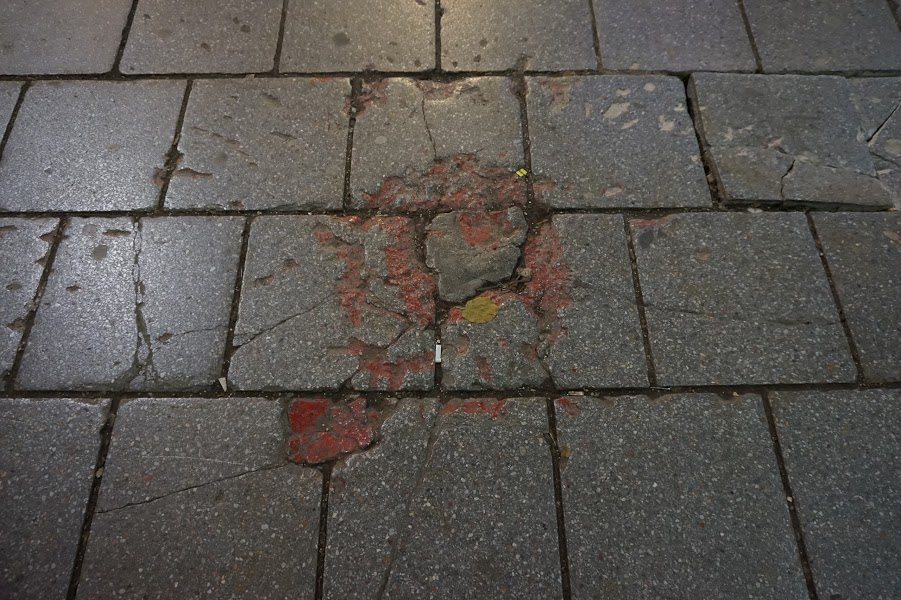
Aaaah Sarajevo – a producer’s treasure trove. The siege of Sarajevo during the Bosnian War is filled with one incredible story after another. This city was under siege by Serbian-Croat forces for four years while the world stood-by and watched. It is a city surrounded by mountains with no military power of its own – it should have been easily toppled, but the strength, ingenuity, and endurance of its people gave way to its victory. Here are a two totally true, off-the-top-of-my-brain taglines that should immediately be made into films:
- In a besieged city with no military weapons, criminals and police forces come together to fight off heavily the fourth most powerful military in the world.
- Sarajevo Rose: As bombs drop outside, bombshells take the stage to compete for the crown of Miss Sarajevo during the Siege of Sarajevo.
If those didn’t get your attention, then perhaps an old school Romeo & Juliet story will. From NBC –
“SARAJEVO, Bosnia-Herzegovina — Slain by snipers’ bullets, the childhood sweethearts’ bodies lay in their final embrace for seven days. By the time they were finally removed from Sarajevo’s Vrbanja Bridge — still entwined — they had become symbols of enduring love caught in a senseless war.”
I would love to see a love letter to the 90’s that takes place during the siege of Sarajevo, where the neon colors of fashion clash with the grey taking over city as it is destroyed by bombs – concrete everywhere while sparks fly between the star-crossed lovers desperate to escape the violence of war. I could also see a documentary wherein a survivor tells the backstory of every memorialized Sarajevo Rose in the city, complete with short biopics about some of the victims.
5. The Ramallah Highlands Trail- Ramallah, Palestine
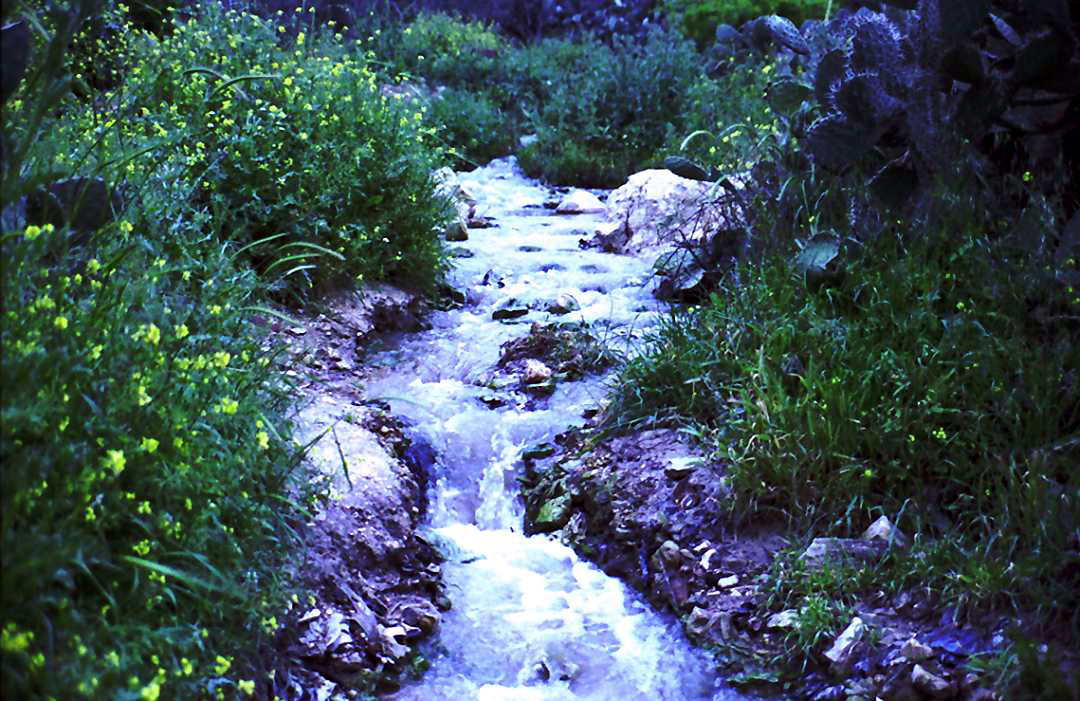
“I began taking long walks in Palestine in the late 1970s. This was before many of the irreversible changes that blighted the land began to take place. The hills then were like one large nature reservewith all the unspoiled beauty and freedom unique to such areas. The six walks described in this bookspan a period of twenty-six years. Although each walk takes its own unique course they are also travels through time and space. It is a journey beginning in 1978 and ending in 2006, in which I write about the developments I have witnessed in the region and about the changes to my life and surroundings.” – Raja Shehadeh, Palestinian Walks: Forays into a Vanishing Landscape
This book should totally be made into a movie. Okay, Ok. On its surface, a film about some dude who likes to take long walks in the desert seems more like a weird dating profile than a film, but if you know anything about the Israel-Palestine conflict, you know that just about any outing in this storied area ravaged by war and apartheid is bound to give you a good tale. But how could a book about walks turn into a cool film, well I say watch the trailer for Persepolis and then read the paragraph again. I think there could be an awesome mixed media documentary just waiting to be produced.
If you are ever visiting the Holy Land, you should definitely check out the hiking scene. So many of us ‘Muricans think that the Middle East is just some big desert. But that couldn’t be further from the truth. In fact, Palestine is starting to bring in major tourism with its hiking tours that take you to ancient ruins along lush tree-lined mountains, blue lakes, and gushing rivers. Thought you knew the Middle East? Think again.
4. Kanha National Park/Kipling Camp- Madyeh Pradesh, India
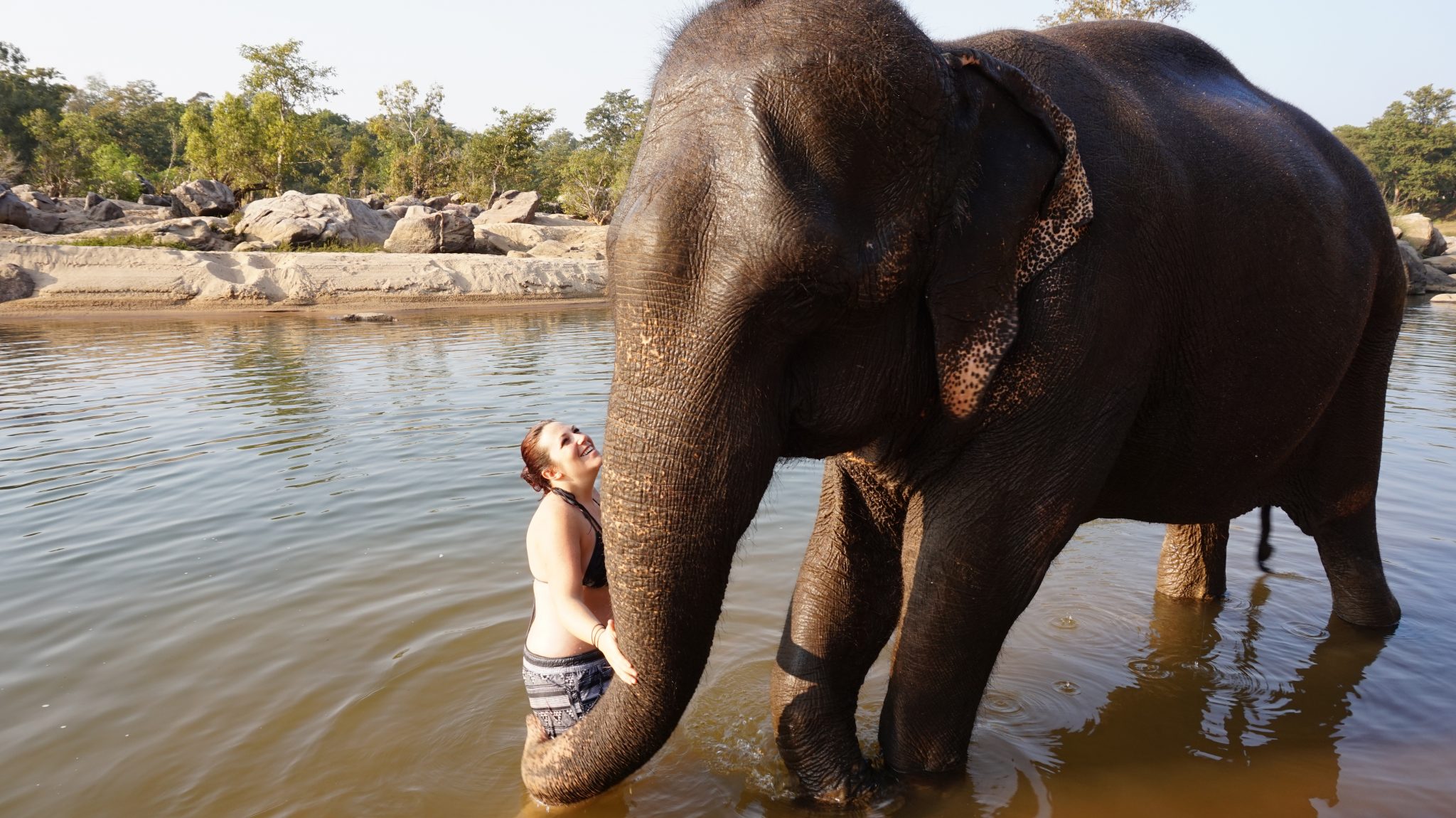
You probably think you’ve never seen Kanha National Park in India. But you’re probably wrong. If you’ve seen any of the Jungle Book movies or cartoons then you’ve been staring at it for hours on end. The stunning park was the inspiration behind Rupyard Kipling’s The Jungle Book. Let me tell you, this park is beautiful and full of beasts. I even spotted Sher Khan on our trip there – if you’ve never heard a tiger roar during a hunt, then you don’t know real fear, my friend. Aside from Kanha, the area has a few more tourist attractions and among the most popular is Kipling Camp – a cabin-style hotel about a mile from the reserve, owned and operated by The Wright Family, one of the most famous conservationist families in the world. So why is Kipling Camp so cool? One word: Tara. Tara is a rescued elephant and here is just an excerpt from one of her adventures:
“With the help of a Maratha nobleman, Mark Shand bought an elephant named Tara and rode her over six hundred miles across India to the Sonepur Mela, the world’s oldest elephant market. From Bhim, a drink-racked mahout, Shand learned to ride and care for her. From his friend Aditya Patankar he learned Indian ways. And with Tara, his new companion, he fell in love. Travels on My Elephant is the story of their epic journey across India, from packed highways to dusty back roads where communities were unchanged for millennia.” – Mark Shand, Travels on My Elephant
A man rescues an elephant from abuse and rides her across India before leaving her in the care of the most respected conservations in India. And its already a best-selling book. Disney, you need to get on this.
(Side-note: Shand’s first book Skullduggery about one of my favorite locales – Irian Jaya Indonesia – should also totally be a movie.)
3. Bullenhauser Damm Schoolhouse- Hamburg, Germany
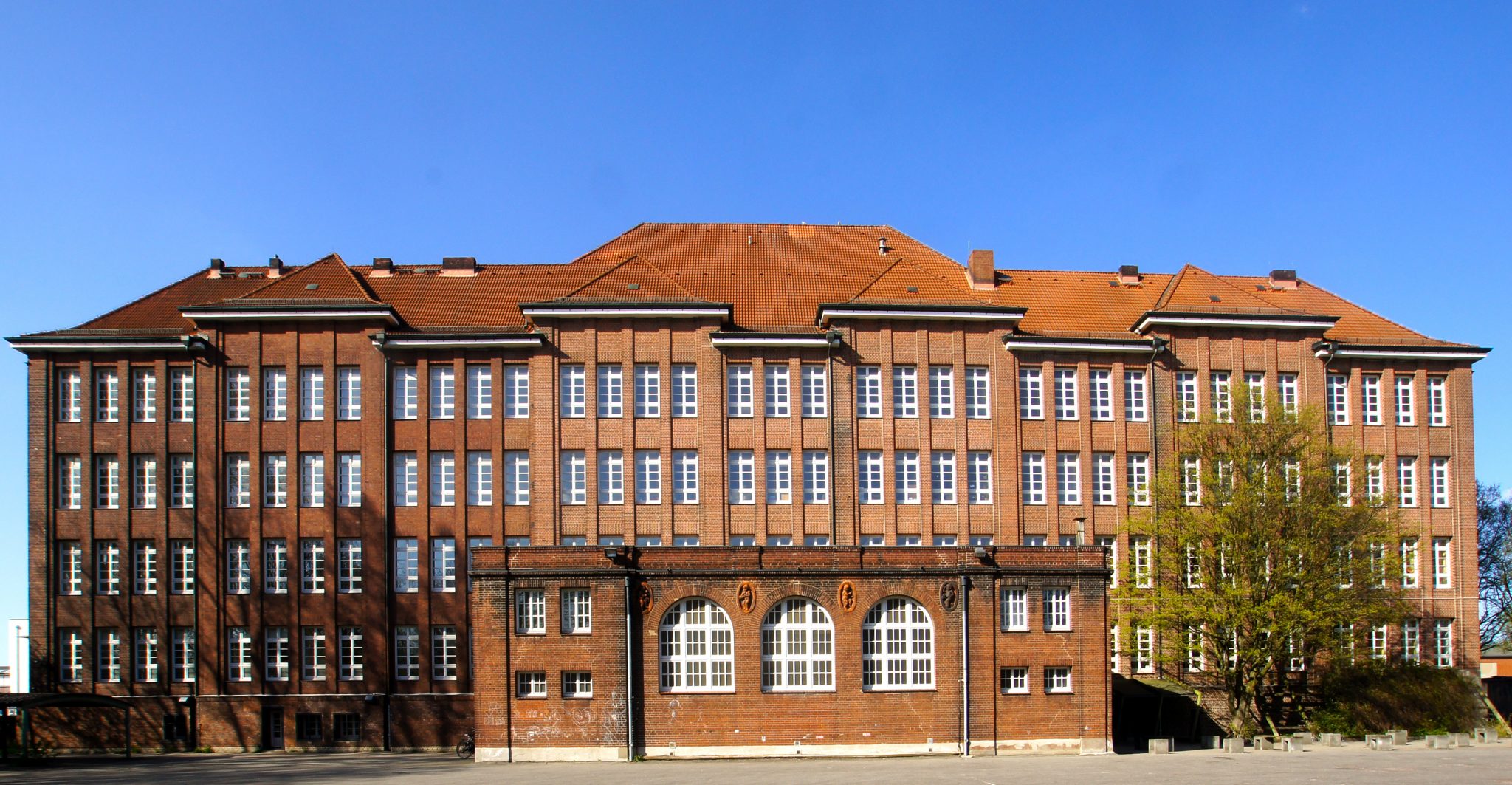
SONY DSC
Okay, fair warning: this entry gets pretty dark, pretty fast. If you’re squeamish or easily affected reading about crimes against kids (who isn’t?!) skip this entry.
The Bullenhauser Damm Schoolhouse isn’t a school anymore. Sadly, it’s a memorial and its dark past is closely woven into Hamburg’s historic fabric as the city lay victim to multiple instances of war crimes – carried out by both the Axis and the Allies. It’s modern and beautiful port city who isn’t afraid to hide its war scars – and if you haven’t been, you should definitely check it out. So why does an old schoolhouse memorial belong on this list. Well, here’s what Dark-Tourism.com has to say about Bullenhauser Damm Memorial:
“It commemorates a particularly heinous crime committed by the Nazis towards the end of WWII: the murder of 20 children from the concentration camp of Neuengamme who they had performed medical experiments on. The murders took place in the cellar of the school. The children and the four adult inmates that had served as the children’s carers at Neuengamme were taken to the back of the former schoolyard and led down to the basement. The adults were taken to the boiler room where they were hanged by SS men. The 20 children had to undress in the room next door, the former school gymnasium changing room, then they were first given morphine one after the other and then hanged in the boiler room too.”
I know this is really dark and of course, talking about children killed by Nazi’s to cover up horrendous experiments comes with massive sensitivity. But to me, there’s definitely a movie in here. What many people forget is that individuals who commit heinous war crimes are not often caught right away. They go underground, into hiding. I could see a movie focused on a small town doctor and tuberculosis specialist who lives in peace for over a decade after the Nazis were run out of Germany. And then, some 14 years after he starts a “new” life, he is found by the police and convicted of war crimes. Imagine if your trusted physician turned out to be a monster? Much like a modern telling of the Oscar-winning, Judgement At Nuremberg, this film could be a sobering portrayal of the human demons who might be living next door. Sound like fiction? Think again, just a few years ago, a Serbian convicted of killing 1200 men in Bosnia was found befriending his victim’s families in Boston, Massachusetts. So, yeah, it happens.
I could actually also see an adapted horror film made out of this. And yes, I understand the sensitivity, but if done in a respectful manner, I could see a film that takes place before this atrocity was discovered – and the victims (innocent children) haunt the inhabitants in an effort to make their murders known and send their souls to rest. Again, this would need to be produced in a way that gives reverence to the victims and would be an extremely difficult film to write and produce. But if done well…
2. Beirut, Lebanon – Iran Contra Affair
Hover Box Element
Click edit button to change this text. Lorem ipsum dolor sit amet, consectetur adipiscing elit. Ut elit tellus, luctus nec ullamcorper mattis, pulvinar dapibus leo.
Ometepe Island - The Oasis of Peace
Ometepe Island - The Oasis of Peace
Hover Box Element
Click edit button to change this text. Lorem ipsum dolor sit amet, consectetur adipiscing elit. Ut elit tellus, luctus nec ullamcorper mattis, pulvinar dapibus leo.
Like any 90’s kid, I grew up overhearing a bunch of adults absolutely pissed off out of their minds about the Iran Contra Affair. And like any other 90’s kid, I didn’t give a flying fart. I was too busy imitating Madonna and getting my ring pops stuck in my fishnet gloves. Cut to twenty-some years later. I’m on a plane leaving Beirut. I’m reading one of Jimmy Carter’s numerous tomes on the conflicts in the Middle East. I come across this sentence:
“In 1986 leaders in Washington were embarrassed with it was disclosed that Israeli intermediaries had assisted the United States in exchanging weapons to Iran for the release of U.S. hostages being held in Lebanon, with proceeds from the arms sales used to support the Contra war in Nicaragua” – Jimmy Carter, Palestine: Peace Not Apartheid
My producer brain explodes! I wake my sleeping husband up and read him the sentence. He looks at me like I’m an idiot with a ring pop stuck in her fishnets. He calmly informs me that the sentence is about the Iran Contra Affair and goes immediately back to snoring.
Man, talk about a web of lies and intrigue! This one sentence tells the stories of secret missions between countries at war, the domino effects of war, and the intricacies of global politics. I could easily see this in the format of Love Actually – human stories tangentially related with the tone of Charlie Wilson’s War meets Snatch. The disparate characters fight their own internal battles without realizing they are only one piece of a puzzle that somehow links the Contras in Nicaragua all the way to the Middle East. This is what Netflix binge shows were made for! Hollywood, get on it.
So if this is all about Iran, Israel, the US, and Nicaragua – why did I choose Beirut, Lebanon as the point of interest? It’s not just because I think Beirut is one of the coolest cities in the world (I would definitely live there), but because it is where the hostage who was released in exchange for the weapons was kidnapped – and it would be a kickass place to start the show. Other points of interest include Hamburg, Germany where much of the planning was conducted; Tel Aviv, Isreal which is the seat of power in the country; The White House in Washington, DC for obvious reasons and Ometepe Island, Nicaragua because it was the only place in the country not affected by the Contra War earning it the name, Oasis of Peace.
1. Revolution Square – Bucharest, Romania
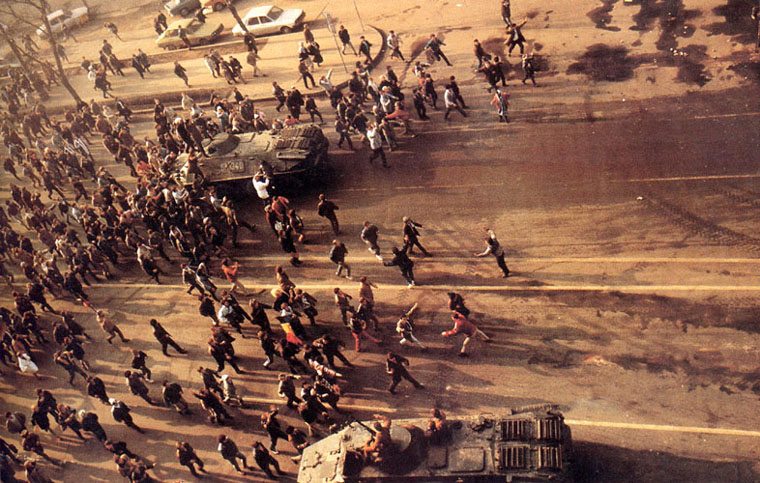
As promised, we are back to where we started – the Royal Palace in Bucharest, Romania. Okay, I’m a little obsessed with this story so you’ll have to forgive this super, way-too-long for a listcle entry. But, holy crap! Did you know that you can actually watch the very moment that the Iron Curtain fell in Romania, one of the biggest enclaves of the Soviet Union?? It’s seriously there, on YouTube. I found this out while, again, reading a book. Here’s the excerpt:
“To the cheering of the seemingly enthusiastic crowd, Ceauşescu mounted the balcony overlooking the square, as he had done scores of times in previous decades. Flanked by his wife, Elena, leading party officials and a bevy of bodyguards, Ceaușescu began delivering one of his trademark dreary speeches. For eight minutes he praised the glories of Romanian socialism, looking very pleased with himself as the crowd clapped mechanically. And then something went wrong. You can see it for yourself on YouTube. Just search for ‘Ceauşescu’s last speech’, and watch history in action. The YouTube clip shows Ceaușescu starting another long sentence, saying, ‘I want to thank the initiators and organizers of this great event in Bucharest, considering it as a’, and then he falls silent, his eyes open wide, and he freezes in disbelief. He never finished the sentence. You can see in that split second how an entire world collapses.” – Yuval Noah Harari, Homo Deus: A Brief History of Tomorrow
And that is just the beginning. Just days before Christmas in 1989 while I was worshipping Madonna’s Like A Prayer album, 19 million Romanian’s were offering up a prayer of their own – a reprieve from the brutal, oppressive, and deadly dictatorship of Nicolae & Elena Ceauşescu. Their prayers were epicly answered.
Why It’s A Film: This is one of the most epic stories of revolution in history and I can’t even begin to fathom why it hasn’t been made into a film. It has it all:
- Two Evil Villains & a Secret Police: Nicolae & his wife, Elena, are classified as some of the most brutal dictators in history. They let millions of Romanians starve to death for their own economic and power hungry interests and presided over the Securitate, a police force whose brutality and oppression rivaled the Nazis. They squashed even the smallest expressions of dissent with execution. These are people who literally went to North Korea for advice on how to govern their people.
- A Dramatic Helicopter Escape: As Bucharest was rose to depose the dictators, they tried to escape via helicopter, but once it was clear that they had been spotted on the radar, the toppled dictator ordered the helicopter to land. It doesn’t end there. The couple and their two security guards halted a passing car, forced the occupants out at gunpoint and went on the run only to be stopped forty-five minutes later. It’s like Bonnie & Clyde – Dictator Edition
- A Military Coup: In almost an instant, the military who had upheld the regime’s bloody policies turned on their leader. As the riots grew, members of the military, who were almost all secretly against the dictator, switched allegiances to help the citizens overthrow their government.
- A Christmas Trial & Execution: The birth of the Western World’s Lord marked the death of the Ceauşescu’s as they were put on public trial and executed on Christmas Day.
- A Top Secret Mission: On Christmas Eve, three members of the special forces are asked if they would accept a top-secret mission for Christmas Day. Only five minutes before they are to act on their orders, they are told the contents of their mission: to execute their (former) leaders Nicolae & Elena Ceauşescu
- Epic Romance: If you’ve ever seen Evita, then you know that the romances of morally unethical despots can be pretty captivating. It is storied that while awful, horrible human beings, the Ceausescu’s were madly and deeply in love until the very end – demanding to be executed together while holding hands in their final moments.
Sorry, the comment form is closed at this time.